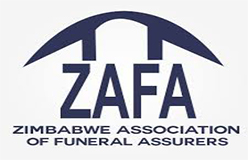Zafa moves to comply with prescribed asset status
ZIMBABWE Association of Funeral Assurers (Zafa) is working on a symmetric project to comply with the policy that requires players to invest at least 10% of their assets into prescribed assets, NewsDay Business can report.
Early this year, Insurance and Pensions Commission (Ipec) actuarial director Robson Mtangadura revealed that at least 10% of a pension fund’s and insurance firm’s assets must be in prescribed assets.
However, players have failed to comply with this measure with Ipec and Treasury pushing for compliance as this would create an additional funding stream that can be channelled into long-term development projects.
Speaking at its annual general meeting on Wednesday in Harare, Zafa outgoing president Arthur Mukasi noted that the environment was not conducive for prescribed assets.
“While the environment was not conducive to investing in prescribed assets, the regulator has given us the opportunity to come up with sector specific projects that can be assigned prescribed asset status,” he said.
“To address this non-compliance, as an industry in the medium term, we have been working on a symmetric project with other private players as a form of investment. Consultations were done and the industry’s input is being considered.”
He said the Zimbabwe Integrating Capital and Risk Programme, which became effective January 1, 2023, required industry players to hold capital that reflected the level of risk underwritten as opposed to predetermined minimum capital levels.
This comes as the funeral insurance sector is lagging in complying with the prescribed asset policy and timely submissions of reports and returns to Ipec.
Mukasi revealed that the symmetric project was being considered by the regulator.
Reporting for the periods 2021 to 2023 financial years, Zafa noted a challenging economic environment, marked by high inflation, foreign currency shortages and regulatory changes, which posed significant hurdles for the industry.
“Inflation and exchange rate movements have had a huge bearing on the cost-of-service provision. The industry however continued to survive the negative shocks thanks to the funeral business model,” Mukasi said.
“The period was also characterised by the relatively low disposable incomes, thereby affecting the insurance penetration rate which is currently around 3,6%. Foreign currency shortages affected the importation of raw materials for caskets and coffin production, coffin handles, hearses and buses.”
Mukasi said the new currency, Zimbabwe Gold, had brought stability in the sector and Zafa was optimistic this would continue into the long-term.
“We are grateful for the current stability brought about by the new currency and we believe it will continue in the medium to long term. This will help a great deal in product structuring, pricing as well as reserving and investments of policyholder funds,” he said.
Expenditure for Zafa for the year ended December 31, 2023, increased to ZWL$158,67 million from the prior year’s ZWL$8,8 million.
However, the association recorded a surplus of ZWL$45 million during the period under review, up from the ZWL$4 million in the prior year.
The income for the group stood at ZWL$229,48 million from a 2022 comparative of ZWL$10,65 million.
Total assets for the period under review stood at ZWL$67,09 million, up from ZWL$4 million in the previous year.-newsday









